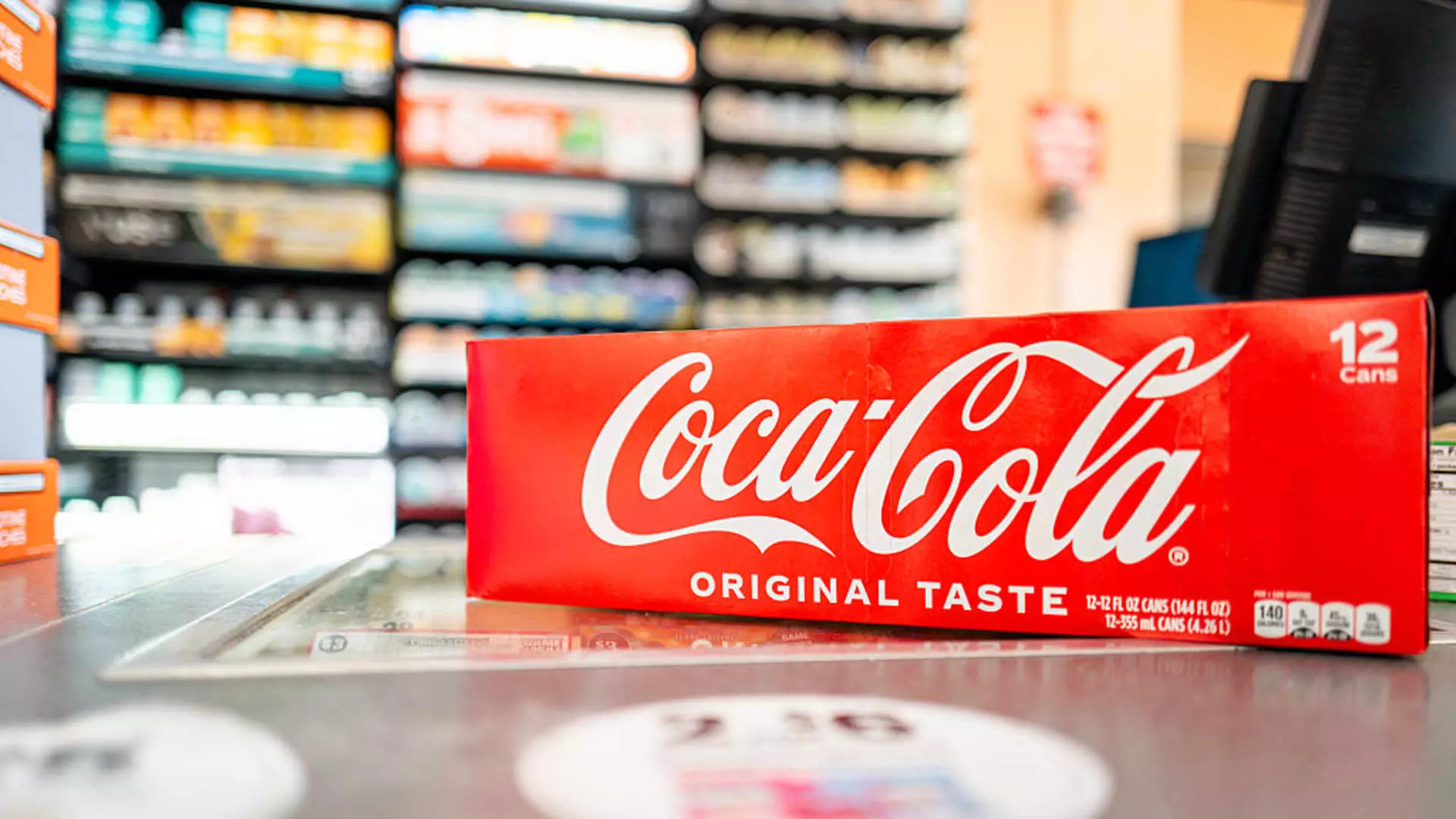Coca-Cola’s recent financial disclosure offers more than a surface-level celebration of surpassing Wall Street expectations; it reveals a complex portrait of a global giant navigating turbulent waters. While the company’s quarterly earnings and revenue figures exceeded analyst forecasts—a feat that might superficially suggest robust health—the underlying narrative tells a different story. Behind the slight uptick in stock prices lurks an uncomfortable truth: a declining demand in key markets and persistent geopolitical disruptions threaten the very foundation of Coke’s longstanding dominance.
Despite posting a modest 1% organic revenue growth—reflecting a slight uptick when adjusted for acquisitions and currency fluctuations—the core volume metrics paint a troubling picture. A 1% decline in unit case volume globally, coupled with decreases in Latin America and Asia-Pacific, exposes a market that is increasingly fatigued. The fact that only the EMEA region bucked the trend with a 3% volume increase signals that the company’s growth is uneven and heavily dependent on specific geopolitical climates. It underscores how fragile the global consumer landscape has become, where even a recognizable brand like Coke struggles to maintain its previous momentum.
Economic Uncertainty and Consumer Fatigue
The narrative articulated by Coke’s leadership points to economic uncertainty and geopolitical tensions as key culprits draining consumer confidence. Yet, this explanation, while valid, feels overly sanitized and somewhat detached from the broader socio-economic realities. In regions like the U.S. and Europe, where the company reports some sequential improvements, it’s not necessarily a sign of resilient demand but perhaps an indication of strategic marketing efforts or temporary market stabilization strategies. Real confidence in a recovery remains elusive, especially considering that overall volume in North America fell 1%. This decline hints at a deeper consumer fatigue—people simply spending less or tightening their budgets amid inflation, job insecurity, and socio-political unrest.
The mention of socio-political issues, such as the social media-driven rumors about Coca-Cola reporting undocumented workers, amplifies this concern. It reflects how misinformation and societal divisions can directly influence consumer purchase behavior, especially for brands that are seen as American icons. Even though Coca-Cola managed to “put that behind” it, the episode exposed vulnerabilities in brand perception, particularly among marginalized communities. It’s a stark reminder that public perception, shaped by social media and political narratives, can profoundly impact consumer engagement.
Market-Specific Challenges: A Broader Trend?
The varied performance across regions is particularly revealing. Latin America and Asia-Pacific experienced declines, while EMEA managed a small but significant growth. This divergence underscores the uneven impact of global crises—where localized economic conditions, political stability, and cultural attitudes all shape consumer behavior. For regions like Latin America, persistent economic volatility and political upheavals likely contribute to subdued demand, a challenge that no beverage giant can ignore.
Coke’s decision to launch a cane sugar version of its classic cola in the U.S. hints at a recognition that diversification and product innovation are necessary but may not be sufficient to reverse declining volumes. It reflects an understanding that market tastes are evolving, and consumers are seeking authenticity and novel experiences. Yet, this move also underscores the difficulty the company faces in adapting to changing preferences in mature markets, where soda consumption is already on the decline.
Is Coca-Cola Really Prepared for the Future?
While Coca-Cola’s financial resilience is often lauded, its ability to sustain this trajectory remains uncertain. The company’s plan to narrow its earnings outlook to a 3% growth target signals a cautious, perhaps even defensive, stance. It appears that despite short-term gains, the long-term outlook is clouded by ongoing challenges: declining volumes, shifting consumer habits, and geopolitical upheavals.
The question that looms large is whether Coca-Cola can truly reinvent itself in a changing world. Its success in maintaining growth in specific regions like EMEA shows adaptability; however, the broader picture suggests a company that is increasingly tethered to market fluctuations and societal tensions. Its reliance on traditional soft drink segments, despite attempts at diversification into water, coffee, and plant-based beverages, indicates a strategic balancing act that might be more fragile than it appears.
In the end, Coca-Cola’s latest earnings report is both a testament to its longstanding brand power and a warning sign of its vulnerabilities. The company’s future will depend not only on navigating economic headwinds but also on its ability to connect authentically with shifting consumer values in an era marked by social unrest, misinformation, and environmental concerns.


Leave a Reply